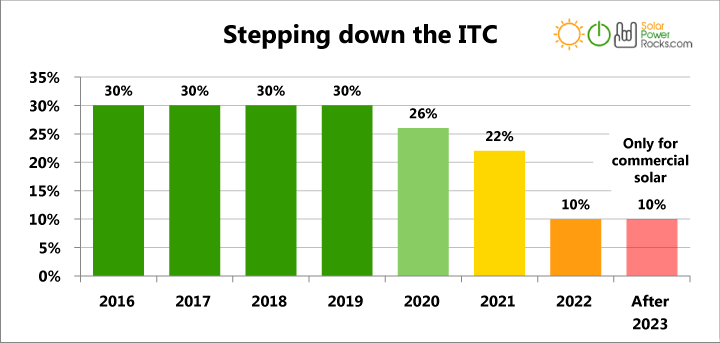The Basics
Is solar a clean power source?
Solar is a zero emission energy source; including both pollutants (CO2, SO2 and NOx) and noise. This makes it the most environmentally sound energy source.
Is solar a cost effective option for me?
Is solar able to protect me from rising electricity rates?
Is there asset appreciation associated with a solar PV system?
How long will a solar system last? How much maintenance is necessary?
What size solar PV system do I need?
The size of the system depends on individual household energy usage, and whether you want to completely replace the local utility with a solar PV system.
There are esssentially 3 options when sizing a solar PV system.
1. Optimized system size: An “optimized” solar system will cover only the most expensive tiers of power purchased from your utility. Most lower cost tiers of power will remain for you to pay. (With solar you’ll only have one electric bill annually after installation). The lowest tier of power stays historically low, in California it is legislatively protected for low income people. All customers have an average of 340 kilowatts of electricity a month of low cost, Tier 1, electricity available for use. The “Optimized” system size theoretically has the quickest “payback time”: time that it takes for the monies that were going to pay utility bills to pay off the cost of the solar PV system.
2. GoSimpleSolar “Optimized Plus”: This system covers all but the lowest cost Tier (as described above). This system will have a slightly longer payback, but greater long term returns. Due to economy of scale and lower installation costs per solar panel, the installation of a medium size system which covers high and middle cost power may payback in a time period equal to or just slightly higher than the “Optimized” system, yet the long term returns much greater. If site conditions make for an simple installation, and it fits in the customer’s budget, this size system proves the most popular.
3. “Zero Electric Bill”: The customer’s goal is to replace all of their electric bill down to zero payment to the utility. It’s a bit of a misnomer, the utility will always have a “interconnection charge” which is typically between $5 and $12/month, depending on the ulitilty rate seleted post project. This Zero Electric Bill option will have the longest payback time, but also the highest total return on investment. Some customers choose this option because of their “green tendancies”, or because they have the cash and “just don’t want to pay for any electricity from the utility.”
I have heard of peak power shaving by solar systems; what is it?
Can I power my home with solar when the grid goes down?
Money
How long before a solar system investment pays off? What returns can I expect?
What rebates can I get?
The main incentive that all tax paying Americans qualify for is the 30% Federal Investment Tax Credit that will be available until December 31, 2019. See detailed Federal 30% Tax Credit info here.
After December 31, 2019, the 30% Federal Investment Tax Credit (ITC) will step down to 26% for the year 2020, 22% in 2021, and 10% in 2022. As it stands, homeowners will no longer be able to take advantage of the Investment Tax Credit after 2022 unless the Federal Government agrees to extend or amend the ITC like they did in 2015. See the below graphic.

*Graphic by SolarPowerRocks.com
Technology
What is solar electric/photovoltaic (PV) power?
How do solar cells work?
What happens to electricity flowing from the solar PV system?
What components make up a complete solar (PV) system?
Why does my solar array cease powering my home or business when the utility grid goes down?
Is it possible to include a breaker or manual flip switch of some sort that would allow me to continue to generate and use power from the cells if it were not available from the grid? (Let’s say, in the event of a massive earthquake.)
Does temperature affect solar PV panels?
How long will solar panels last?
What is solar irradiance testing?
Irradiance refers to the power of solar radiation per unit area on a surface. Global irradiance on a horizontal surface is comprised of direct irradiance and diffuse irradiance. On a tilted surface, the reflected irradiance from the ground also contributes to the total global irradiance. Generally, solar irradiance is called insolation.
Solar radiation affects many systems in the house and can vary considerably within the same town. On-site, solar irradiance is a particularly useful measurement if there is a photovoltaic (PV) system or solar thermal system installed at the field test location. Also, if space conditioning is a focus of the field test, solar irradiance is an important measurement as solar radiation has a large effect on heating and cooling load requirements, electrical lighting demand (daylighting), and envelope performance.
Compliments of NREL.gov

